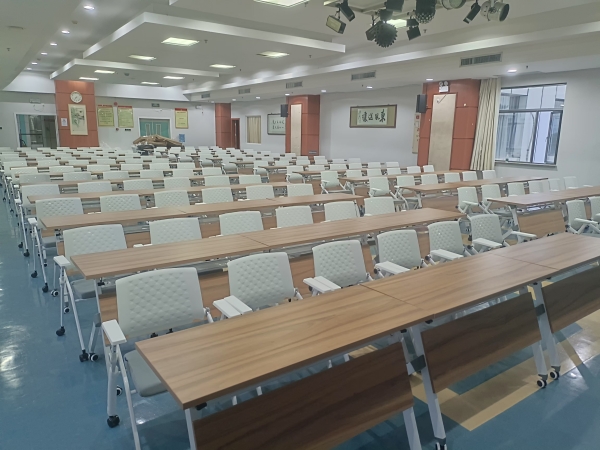In B2B procurement scenarios, the choice of lecture chairs not only affects comfort and aesthetics but also directly impacts long-term cost. Ease of maintenance and cleaning is a crucial factor that many buyers often overlook—low maintenance costs equal a higher return on investment (ROI). For B2B buyers, balancing functionality, durability, and ease of maintenance when selecting lecture chairs has become a crucial professional consideration.
1. Choose easy-to-clean materials to reduce post-production labor costs.
(a) Fabric: Waterproof and stain-resistant > aesthetics
PU/PVC leather: Resists liquid penetration, easily removes stains, and is suitable for frequently used lecture halls and conference rooms.
High-density mesh: Breathable and mildew-resistant, but choose a water-repellent coating to prevent beverage penetration.
Antibacterial fiber: Fabrics with added silver ions or nano-coatings inhibit bacterial growth and reduce disinfection costs.
Pitfalls to Avoid: Avoid fabric seats (unless they are removable and washable), as stubborn stains are difficult to remove and water stains are likely to remain after cleaning.
(b) Frame: Corrosion-Resistant and Abrasion-Resistant
Aluminum Alloy/Stainless Steel: Rust-Resistant and resistant to humid environments (such as those in the rainy southern regions), with a lifespan of over 10 years.
Reinforced PP Plastic: Lightweight and impact-resistant, suitable for stackable chairs, but avoid inferior plastics (which are prone to brittle cracking).

2. Simple Structure: Reduces the Difficulty of Cleaning Hard Spots.
The simplicity of the chair structure, including the presence of excessive joints and complex grooves, is another key factor in determining cleaning efficiency. When purchasing, prioritize designs with one-piece structures or modular components with minimal connections. This not only makes it easier for a rag or vacuum cleaner to reach during cleaning, but also reduces the likelihood of dust, food residue, paper scraps, and other debris being trapped. For example, a simple folding seat without fabric covering can significantly reduce daily cleaning time and is particularly suitable for large lecture spaces with frequent class rotations and large crowds.
3. Modular design makes maintenance and replacement easier.
In high-use environments, lecture chairs inevitably experience wear, loosening, or damage to components. If a chair design incorporates a modular structure, such as individually replaceable seats, backrests, armrests, or linkage systems, it can be restored to service by simply replacing damaged components rather than scrapping the entire chair. This design not only improves maintenance efficiency but also significantly reduces long-term repair costs. This is particularly important for large institutions with multiple classrooms or lecture halls.
4. Easy cleaning and quick inspection of large areas.
For lecture halls or lecture halls with large seating areas, it is crucial that lecture chairs feature features that facilitate centralized cleaning and inspection. For example, some lecture chairs feature self-retracting seats that automatically flip up when unoccupied, exposing the floor area for quick cleaning by robotic or manual cleaning. Furthermore, the standard numbering system for chairs facilitates cleaning and maintenance record keeping, improving venue management efficiency.
Navigation
Contact Us
0086 13927706942
0757-86513332
Huangji Road, Jiujiang Nanhai, Foshan, Guangdong, China
Leaving a message. :